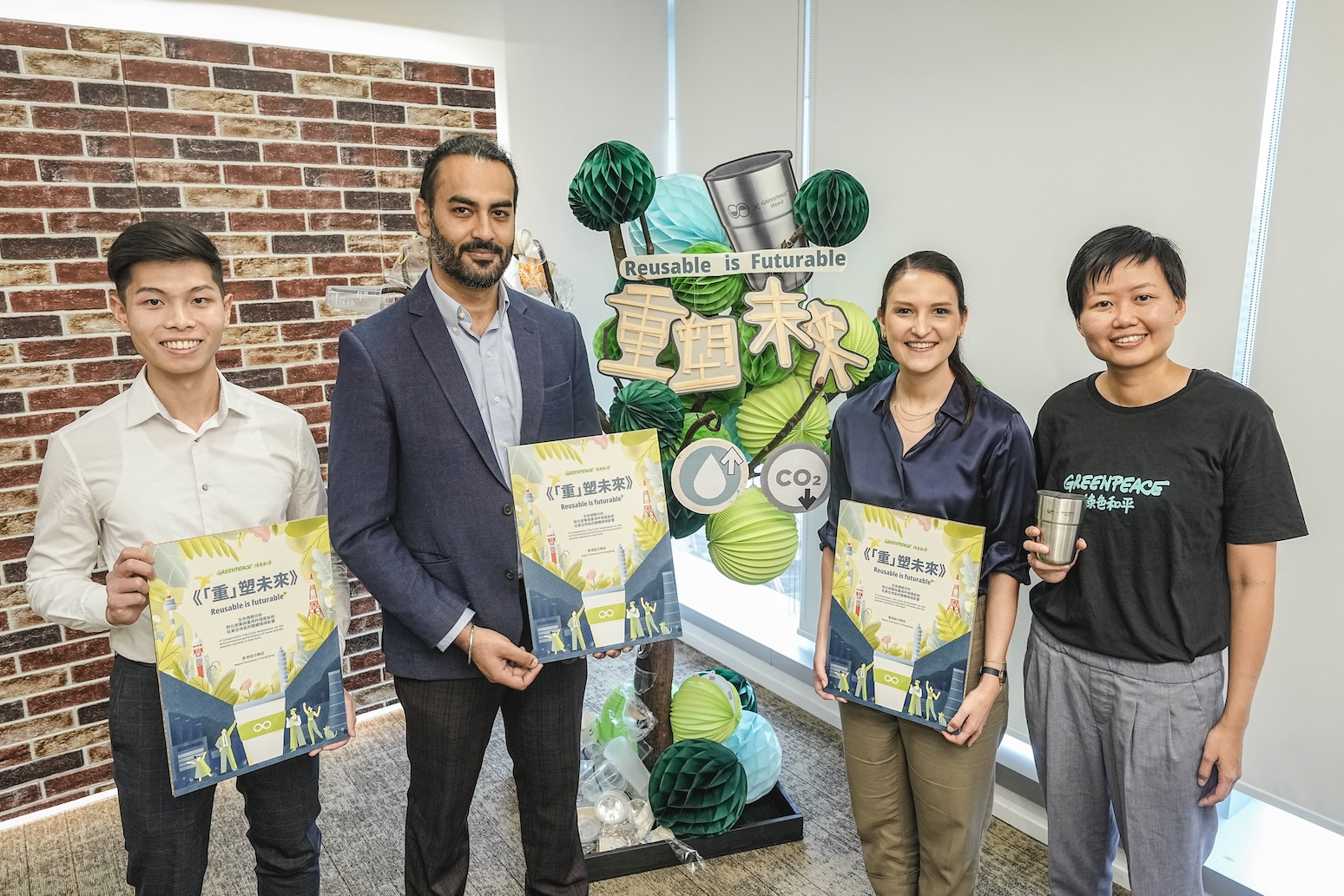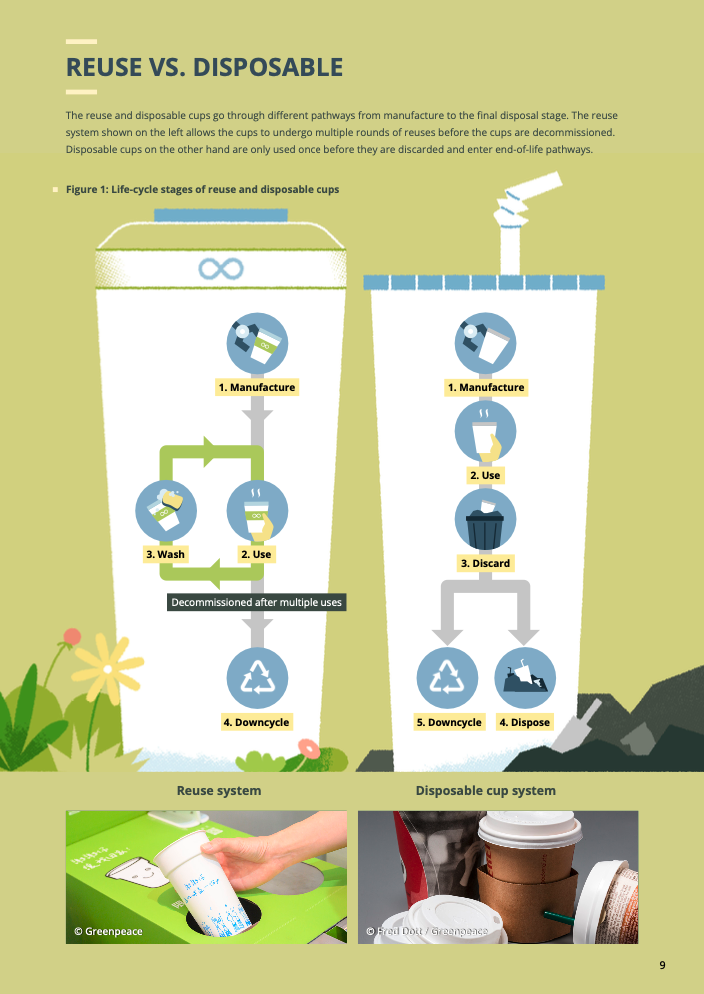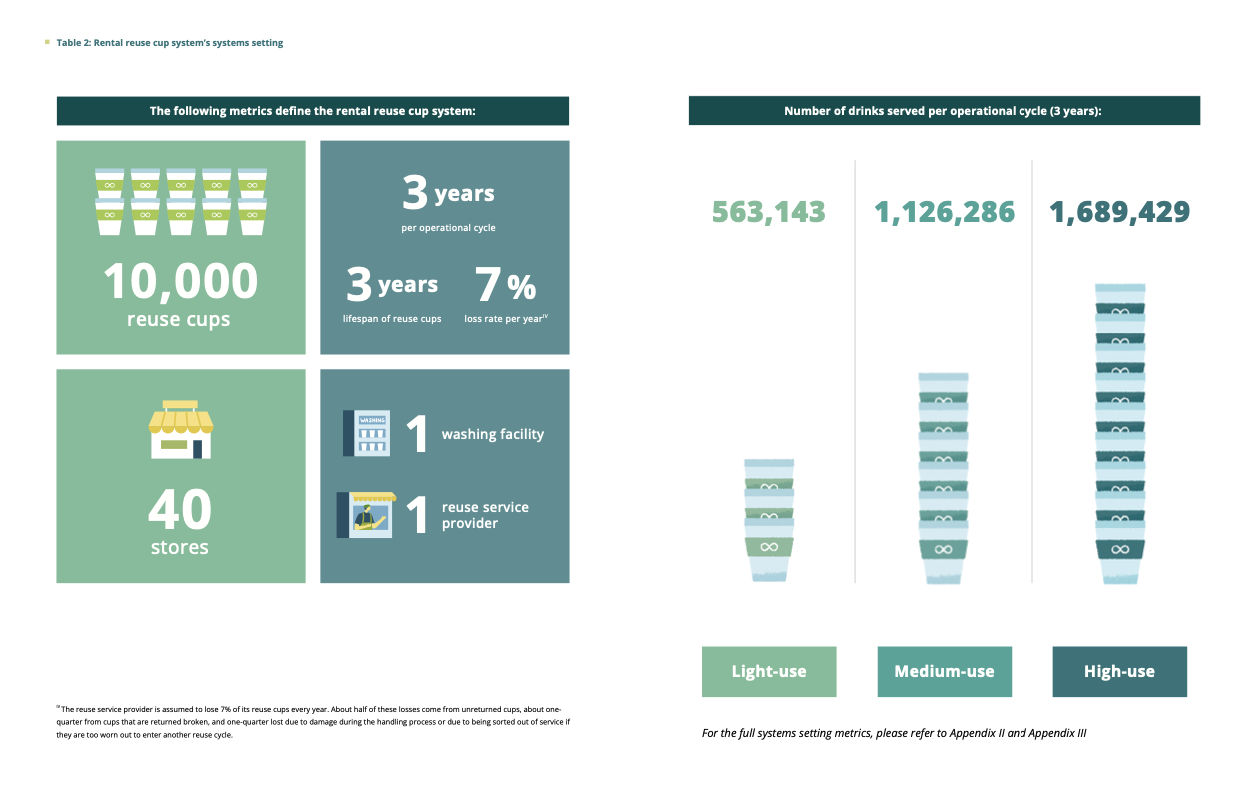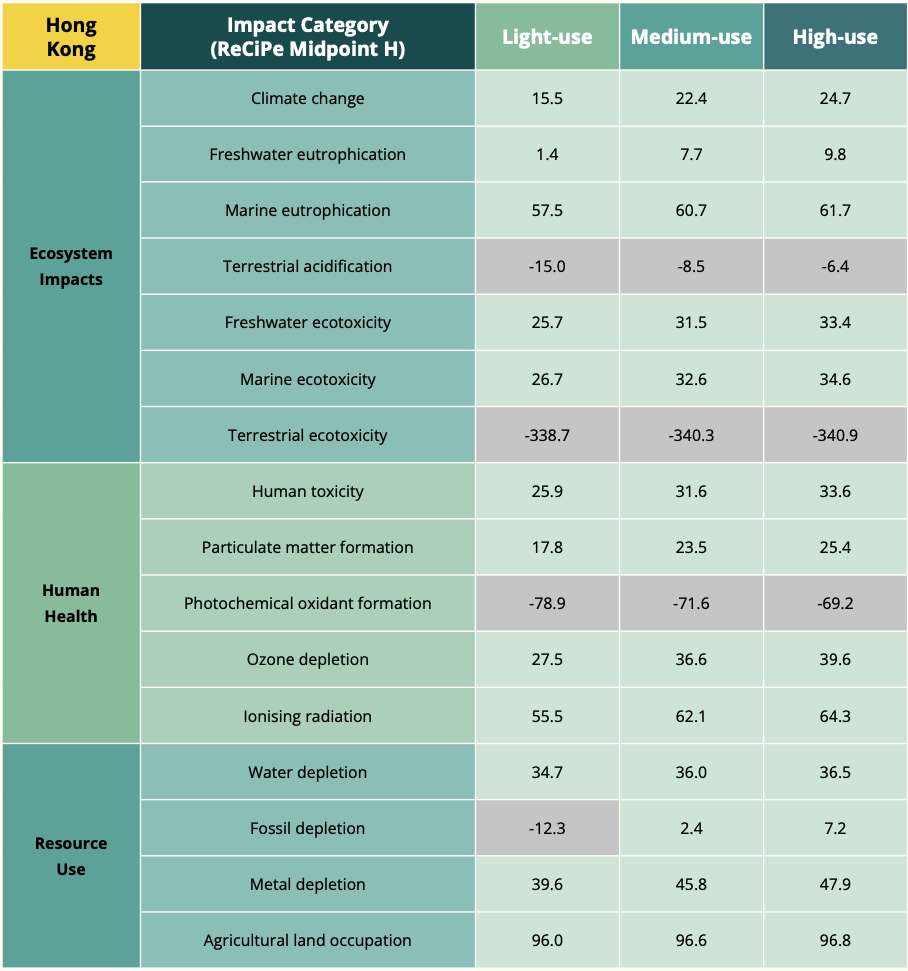Life Cycle Insights
Reusable Cup Systems: How Do They Stack Up? An LCA Perspective

Plastic waste is the second most pressing issue in Hong Kong, contributing to 21% of the municipal waste in 2021.1 In July 2022, Greenpeace Hong Kong launched a Borrow and Return Cup Program with a local start-up Circular City to combat this serious problem. To understand the environmental benefits of reusable cup systems, Dr. Meike Sauerwein from HKUST and Dr. Shauhrat S. Chopra from CityU conducted a cradle-to-grave a Life Cycle Assessment (LCA) study to compare reuse and disposable cup systems. The study uses operational data and system design settings from five East Asian reuse service providers in Busan (Korea), Hong Kong, Taipei (Taiwan), and Tokyo (Japan) to investigate environmental impacts of a cup rental system that utilizes 10,000 cups to supply 40 shops in these cities over three years. The assumptions were serving an average of 13 (baseline/ light-use scenario), 26 (medium-use) or 39 (high-use) drinks per day in reusable cups.
Systems thinking played a crucial role by considering all the relevant actors and processes of a rental cup system operating for 3 years—from cup manufacturers, rental cup service providers, shops, consumers, washing facilities, and waste management systems (refer to Figure 1). Results showed the rental reuse cup system (parameters set out in Figure 2) can out-perform the disposable cups (involving a combination of PE-lined paper cups and recycled PET cups) in various environmental impact categories. For example each use of a reuse cup could reduce greenhouse gas emissions by 25%, water consumption by 37%, and human toxicity by 34% (Figure 3).
Additionally, through scenario modelling the study identifies significant environmental hotspots (processes that cause particularly high impact in a certain environmental category), including cup production (especially for single-use cups) and the washing process, packaging and boxes used for reverse logistics of cups. Despite these hotspots, the study suggests that the relatively lower environmental impacts observed in the East Asian setting compared to earlier studies in other regions may be attributed to factors such as short transportation distances, efficient logistics, convenient yet simple (over-the-counter) distribution and return facilities, and promotion of minimal washing of returned cups by the customer. The research group currently expands the study to explore technology-enabled systems that involve for example the use of apps and vending machines.
Backed by promising research findings, Greenpeace now advocates for the expansion of the reusable cup system initiative to more F&B chain restaurants in HK. Considering the fact that Hong Kong F&B outlets collectively account for the staggering use of 220 million disposable cups yearly (Greenpeace HK, Oct 2023), an increase in reusables has a chance to make a significant impact. By encouraging the adoption of reusable cup systems, Greenpeace envisions a significant reduction in disposable plastic tableware and a transition towards a more sustainable future.


